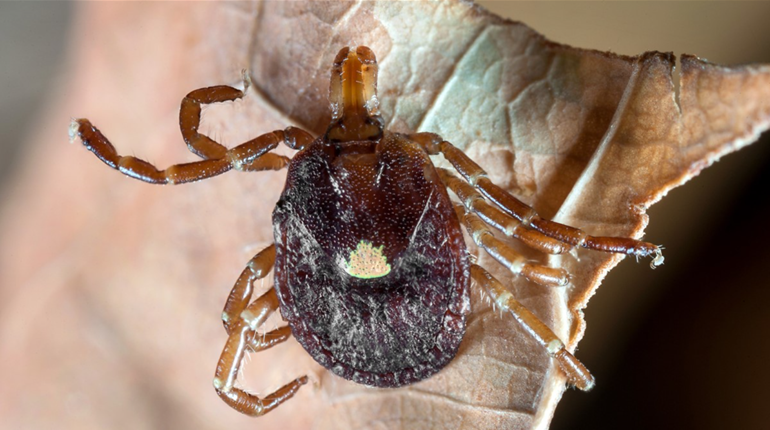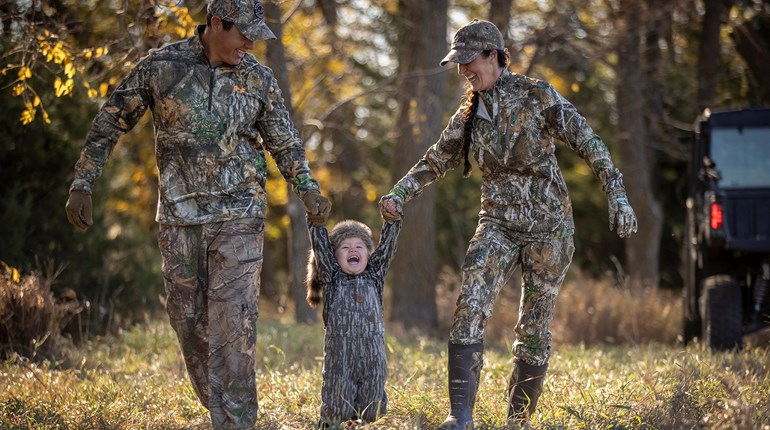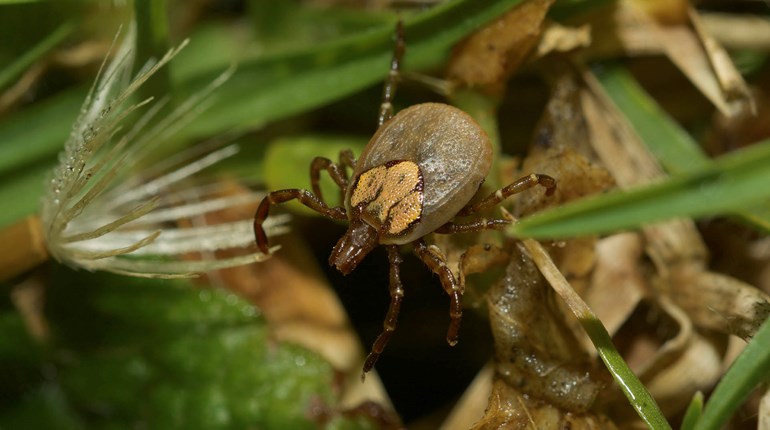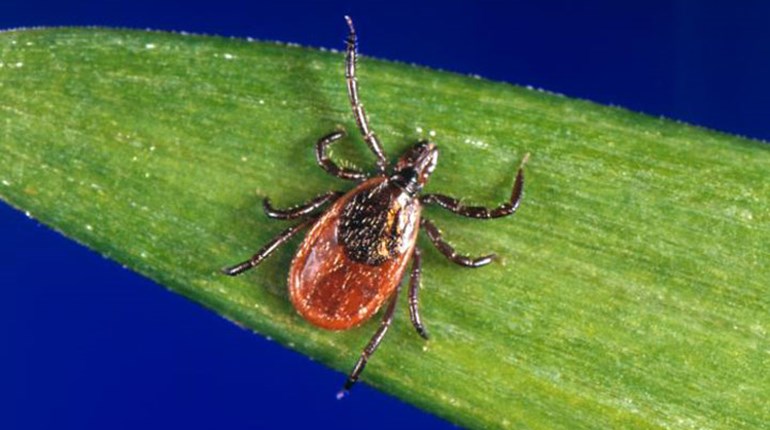** When you buy products through the links on our site, we may earn a commission that supports NRA's mission to protect, preserve and defend the Second Amendment. **
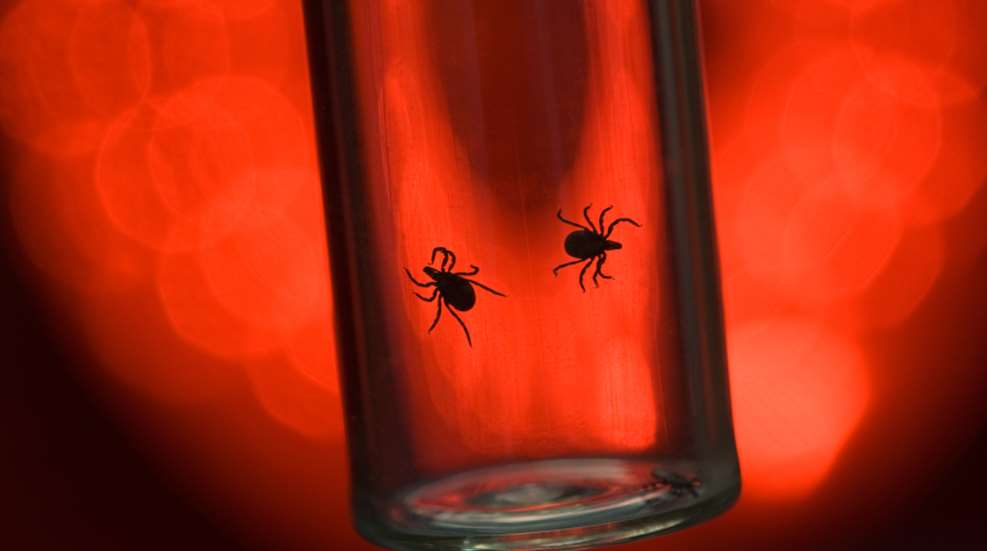
I like to think of myself as fairly nonphobic when it comes to things that skitter, slither and crawl. I'm not bothered by bees, snakes, geckos or leeches. Heck, I once allowed myself to be photographed with a tarantula on my cheek. However, I admit freely that I screech hysterically and do a frantic dance of horrified revulsion every time I locate a tick dangling from my person. Almost irrespective of where you live, if you spend much time in the outdoors, you're very likely to encounter these parasitic members of the spider family...and you may not know it. In this first installment of a two-part series, we'll review the kinds of disease-bearing ticks extant in the Lower 48 American States* and what illnesses they can spread to human beings.
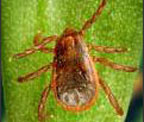
1. Brown Dog Tick
This type of tick is found everywhere in the Lower 48 and Hawaii (not shown below). This is in part due to the fact that, thanks to its preference for feeding on canines, this tick can complete its entire life cycle inside a dwelling. That means that they're not subject to freezing temperatures or other factors that inhibit ticks. As its name suggests, this type of tick prefers to bite dogs...but it will certainly take a blood meal from humans or other mammals. The good news is that this kind of tick is not known to carry Lyme disease.
It can transmit Rocky Mountain Spotted Fever, also a very serious illness, but this seems to be most prevalent in the southwestern U.S. Symptoms of Rocky Mountain Spotted Fever include fever, headache, abdominal pain, vomiting, muscle pain and a characteristic spotted rash (although some people never develop the rash). Rocky Mountain Spotted Fever is potentially fatal but treatable with antibiotics, so if you or anyone in your family develop these symptoms, see a doctor as soon as possible.
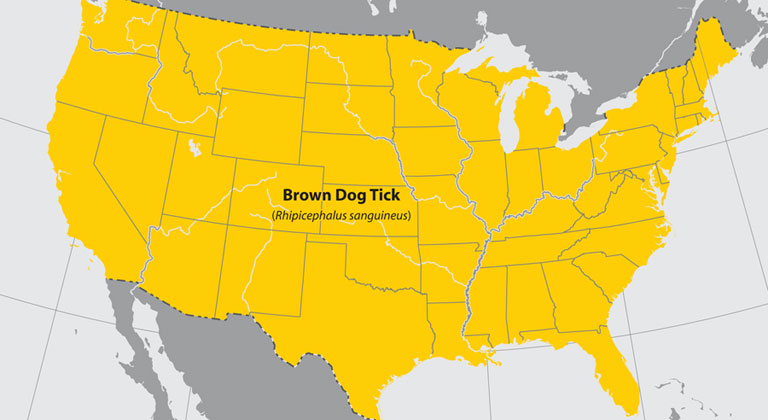
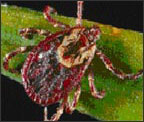
2. American Dog Tick, or Wood Tick
Known as both the wood tick and the American dog tick, this is the second-most common tick in America. This nasty little guy, incidentally, is usually not a guy at all. Females are the most likely to bite humans, although it's true that all ticks must consume blood in order to survive. This type of tick can cause Rocky Mountain Spotted Fever, as well as a disease called tularemia.
Tularemia is bacterial, and when transmitted by ticks tends to cause ulceration of the skin where the bite occurred, as well as swelling of the lymph glands closest to the bite (usually the armpit or groin). Tularemia can also cause very high fevers, so it's important that treatment be sought immediately.
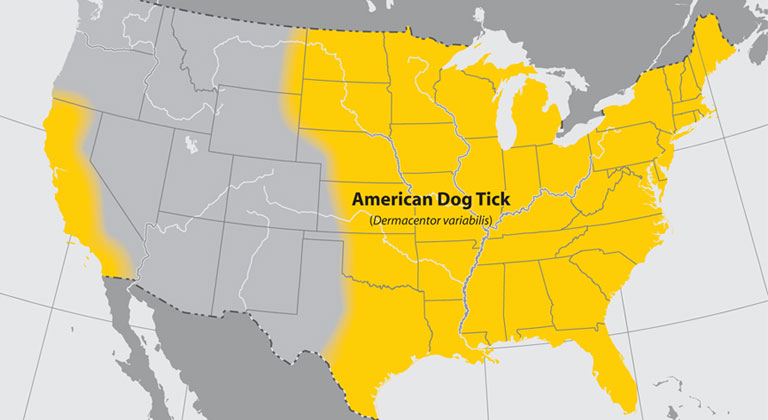
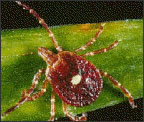
3. Lone Star Tick
Despite its name. the Lone Star tick is not found in Texas. Instead, it gets its moniker from the distinctive whitish spot found on the back of adult females. This particular breed of tick is known to be very aggressive in its pursuit of human blood, and the most common result of its bite is redness and pain at the site. The good news is that this irritation is actually not a sign of infection; the tick's saliva can be irritating. Further good news is that this tick isn't known to transmit Lyme disease.
Unfortunately, it can transmit tularemia as well as two diseases we haven't mentioned yet: erlichiosis and STARI. Erlichiosis can be a fairly insidious disease, because its initial symptoms (usually occurring a week or two after a bite) mimic those of common viral infections: headache, fatigue, muscle aches and fever. Left untreated, erlichiosis can be quite serious, but if caught early can be quite curable. STARI (Southern Tick-Associated Rash Illness), interestingly, mimics the symptoms of Lyme disease but is nowhere near as serious: It can cause a bullseye rash very similar to the one that is associated with Lyme, as well as Lyme-like symptoms.
One of the weirdest potential consequences of a Lone Star tick bite, however, isn't really a "disease" at all—it's an allergy. Although nobody really knows why, some people who are bitten by this kind of tick develop an allergy to red meat...an allergy serious enough to cause anaphylactic shock! This pattern seems to be most prevalent in Virginia, North Carolina and Tennessee.
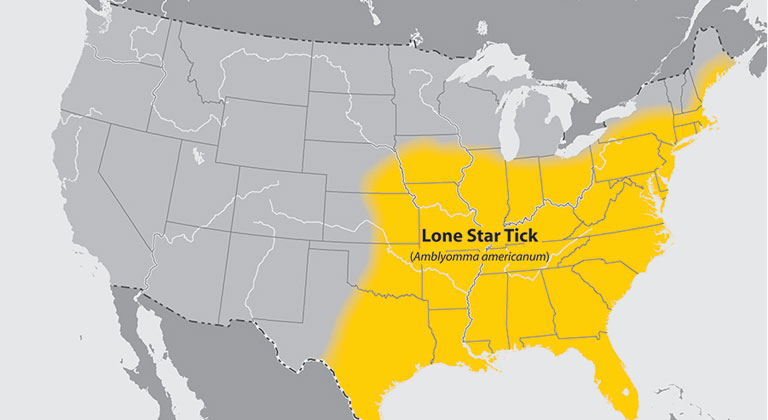
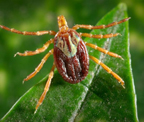
4. Gulf Coast Tick
The adult females of the Gulf Coast tick are notable for the odd-looking pale-colored "cape" on their backs. As its name suggests, this tick is most prevalent in the Gulf Coast states. It has been known to cause rickettsiosis, a spotted fever similar to Rocky Mountain Spotted fever, but not as serious. Its most common symptom is a fever, rash and "eschars" at the bite site. Eschars are essentially crusty or blackened scabs on the skin at the site of the bite.
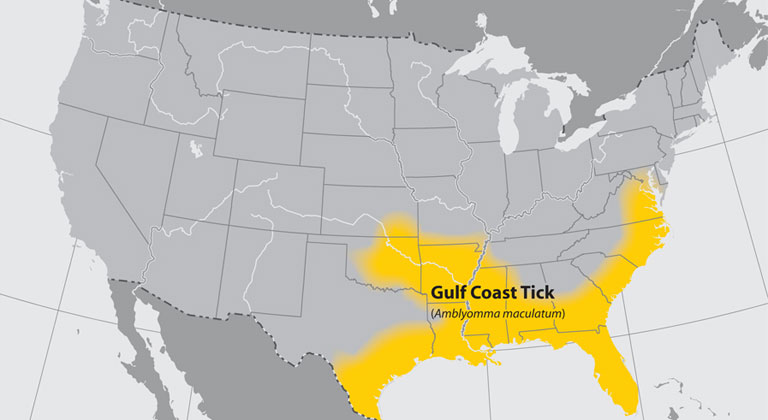
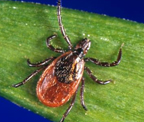
5. Blacklegged Tick
The blacklegged tick is probably the most infamous of all of the ticks on this list when it comes to spreading disease. The most notorious one is, of course, Lyme disease. As you may know, Lyme starts off with symptoms that can be quite unremarkable: fever, fatigue and headache. The biggest "smoking gun" of Lyme is the classic "bullseye" rash.

Here at NRA HQ, where we tend to spend a lot of time outdoors, this is known as "The Red Badge of Courage."
However, it's important to note that not all cases of Lyme include this rash, and that, if the tick bites somewhere hard to see (say, for example, in your hair) the rash may not be visible. Other early symptoms include fever, chills, headache, fatigue, muscle and joint aches and swollen lymph nodes. In the early stages, Lyme is curable with antibiotics, but in later stages it's far more difficult to clear. Untreated, it can cause Bell's palsy, numbness, problems with short-term memory, painful, swollen joints and other very concerning symptoms.
The blacklegged tick can also cause babesiosis, anaplasmosis and Powassan disease. Babesiosis is often symptomless, and is usually only dangerous to people who don't have a spleen or are immune-compromised. Anaplasmosis causes fever, chills, headaches and muscle aches, and is treatable with antibiotics. Powassan disease is a viral illness, causing fever, headache, vomiting, weakness, confusion, seizures and memory loss. Fortunately, this difficult-to-treat virus is rather rare, with 12 reported cases nationwide in 2012.
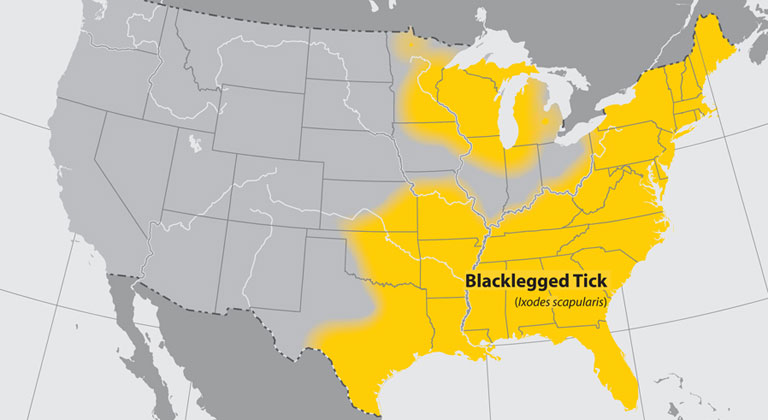
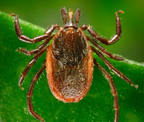
6. Western Blacklegged Tick
The Western blacklegged tick, unlike its eastern and midwestern cousin, has a much smaller distribution area. This parasite can and will bite humans, and when it does it can transmit both Lyme and anaplasmosis. The good news is that its preferred hosts are lizards and small animals, so it's much rarer that people get sick from its bites.

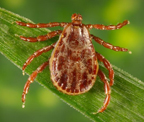
7. Rocky Mountain Wood Tick
No doubt it will come as little surprise that the Rocky Mountain wood tick causes Rocky Mountain Spotted Fever. However, it can also transmit Colorado Tick Fever as well as tularemia.

This concludes our roundup of the seven disease-bearing ticks in America. Keep an eye out for out next installment in this series, discussing proactive and reactive ways to deal ticks...which we will publish just as soon as this psychosomatic itching subsides.
*Ticks known to bite and infect humans are not common in Alaska, although there have been reports of non-native ticks transported to the state. However, Alaska's long, harsh winters tend to prevent them from establishing a permanent beachhead. There are disease-bearing ticks in Hawaii, although tick-borne diseases are rare.
Lead image: istockphoto. All article images courtesy Centers for Disease Control.

1. Brown Dog Tick
This type of tick is found everywhere in the Lower 48 and Hawaii (not shown below). This is in part due to the fact that, thanks to its preference for feeding on canines, this tick can complete its entire life cycle inside a dwelling. That means that they're not subject to freezing temperatures or other factors that inhibit ticks. As its name suggests, this type of tick prefers to bite dogs...but it will certainly take a blood meal from humans or other mammals. The good news is that this kind of tick is not known to carry Lyme disease.
It can transmit Rocky Mountain Spotted Fever, also a very serious illness, but this seems to be most prevalent in the southwestern U.S. Symptoms of Rocky Mountain Spotted Fever include fever, headache, abdominal pain, vomiting, muscle pain and a characteristic spotted rash (although some people never develop the rash). Rocky Mountain Spotted Fever is potentially fatal but treatable with antibiotics, so if you or anyone in your family develop these symptoms, see a doctor as soon as possible.


2. American Dog Tick, or Wood Tick
Known as both the wood tick and the American dog tick, this is the second-most common tick in America. This nasty little guy, incidentally, is usually not a guy at all. Females are the most likely to bite humans, although it's true that all ticks must consume blood in order to survive. This type of tick can cause Rocky Mountain Spotted Fever, as well as a disease called tularemia.
Tularemia is bacterial, and when transmitted by ticks tends to cause ulceration of the skin where the bite occurred, as well as swelling of the lymph glands closest to the bite (usually the armpit or groin). Tularemia can also cause very high fevers, so it's important that treatment be sought immediately.


3. Lone Star Tick
Despite its name. the Lone Star tick is not found in Texas. Instead, it gets its moniker from the distinctive whitish spot found on the back of adult females. This particular breed of tick is known to be very aggressive in its pursuit of human blood, and the most common result of its bite is redness and pain at the site. The good news is that this irritation is actually not a sign of infection; the tick's saliva can be irritating. Further good news is that this tick isn't known to transmit Lyme disease.
Unfortunately, it can transmit tularemia as well as two diseases we haven't mentioned yet: erlichiosis and STARI. Erlichiosis can be a fairly insidious disease, because its initial symptoms (usually occurring a week or two after a bite) mimic those of common viral infections: headache, fatigue, muscle aches and fever. Left untreated, erlichiosis can be quite serious, but if caught early can be quite curable. STARI (Southern Tick-Associated Rash Illness), interestingly, mimics the symptoms of Lyme disease but is nowhere near as serious: It can cause a bullseye rash very similar to the one that is associated with Lyme, as well as Lyme-like symptoms.
One of the weirdest potential consequences of a Lone Star tick bite, however, isn't really a "disease" at all—it's an allergy. Although nobody really knows why, some people who are bitten by this kind of tick develop an allergy to red meat...an allergy serious enough to cause anaphylactic shock! This pattern seems to be most prevalent in Virginia, North Carolina and Tennessee.


4. Gulf Coast Tick
The adult females of the Gulf Coast tick are notable for the odd-looking pale-colored "cape" on their backs. As its name suggests, this tick is most prevalent in the Gulf Coast states. It has been known to cause rickettsiosis, a spotted fever similar to Rocky Mountain Spotted fever, but not as serious. Its most common symptom is a fever, rash and "eschars" at the bite site. Eschars are essentially crusty or blackened scabs on the skin at the site of the bite.


5. Blacklegged Tick
The blacklegged tick is probably the most infamous of all of the ticks on this list when it comes to spreading disease. The most notorious one is, of course, Lyme disease. As you may know, Lyme starts off with symptoms that can be quite unremarkable: fever, fatigue and headache. The biggest "smoking gun" of Lyme is the classic "bullseye" rash.

Here at NRA HQ, where we tend to spend a lot of time outdoors, this is known as "The Red Badge of Courage."
However, it's important to note that not all cases of Lyme include this rash, and that, if the tick bites somewhere hard to see (say, for example, in your hair) the rash may not be visible. Other early symptoms include fever, chills, headache, fatigue, muscle and joint aches and swollen lymph nodes. In the early stages, Lyme is curable with antibiotics, but in later stages it's far more difficult to clear. Untreated, it can cause Bell's palsy, numbness, problems with short-term memory, painful, swollen joints and other very concerning symptoms.
The blacklegged tick can also cause babesiosis, anaplasmosis and Powassan disease. Babesiosis is often symptomless, and is usually only dangerous to people who don't have a spleen or are immune-compromised. Anaplasmosis causes fever, chills, headaches and muscle aches, and is treatable with antibiotics. Powassan disease is a viral illness, causing fever, headache, vomiting, weakness, confusion, seizures and memory loss. Fortunately, this difficult-to-treat virus is rather rare, with 12 reported cases nationwide in 2012.


6. Western Blacklegged Tick
The Western blacklegged tick, unlike its eastern and midwestern cousin, has a much smaller distribution area. This parasite can and will bite humans, and when it does it can transmit both Lyme and anaplasmosis. The good news is that its preferred hosts are lizards and small animals, so it's much rarer that people get sick from its bites.


7. Rocky Mountain Wood Tick
No doubt it will come as little surprise that the Rocky Mountain wood tick causes Rocky Mountain Spotted Fever. However, it can also transmit Colorado Tick Fever as well as tularemia.

This concludes our roundup of the seven disease-bearing ticks in America. Keep an eye out for out next installment in this series, discussing proactive and reactive ways to deal ticks...which we will publish just as soon as this psychosomatic itching subsides.
*Ticks known to bite and infect humans are not common in Alaska, although there have been reports of non-native ticks transported to the state. However, Alaska's long, harsh winters tend to prevent them from establishing a permanent beachhead. There are disease-bearing ticks in Hawaii, although tick-borne diseases are rare.
Lead image: istockphoto. All article images courtesy Centers for Disease Control.













